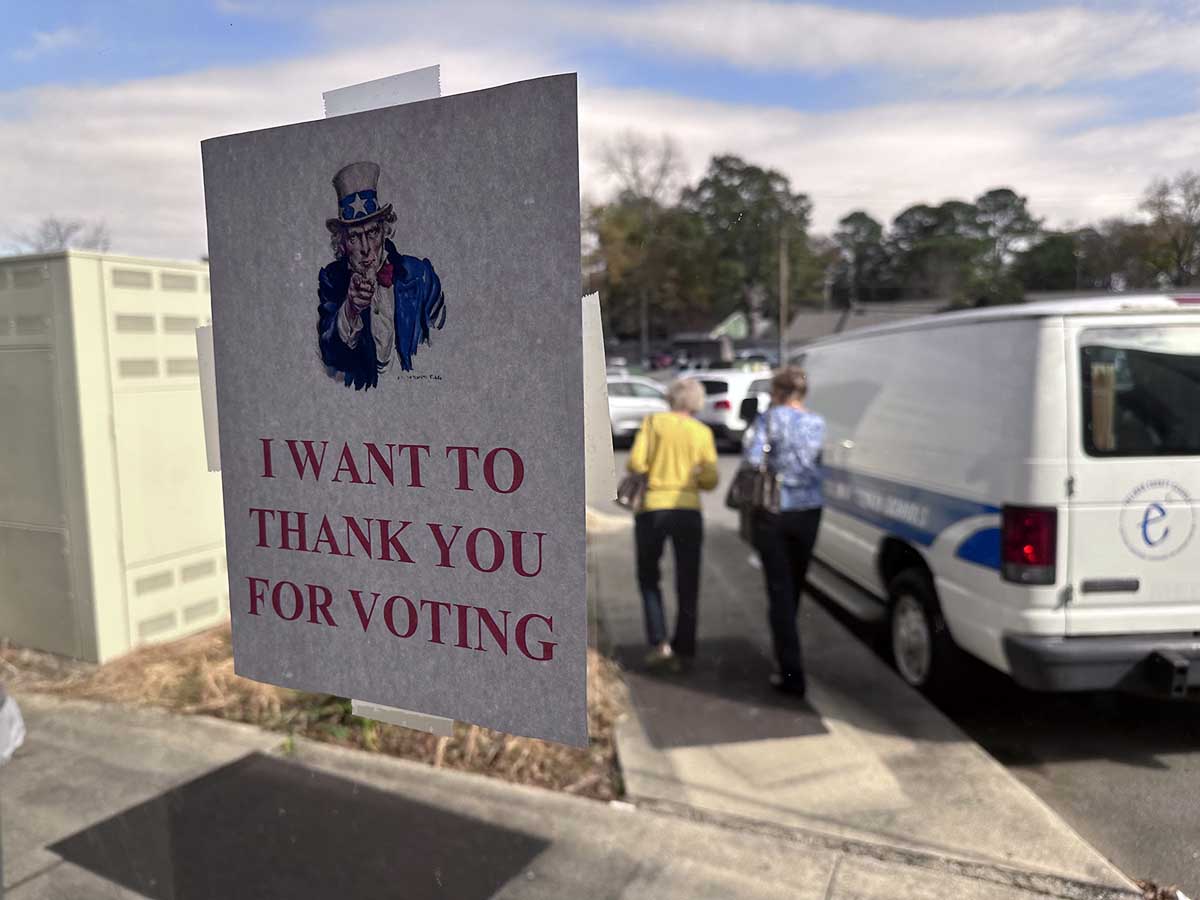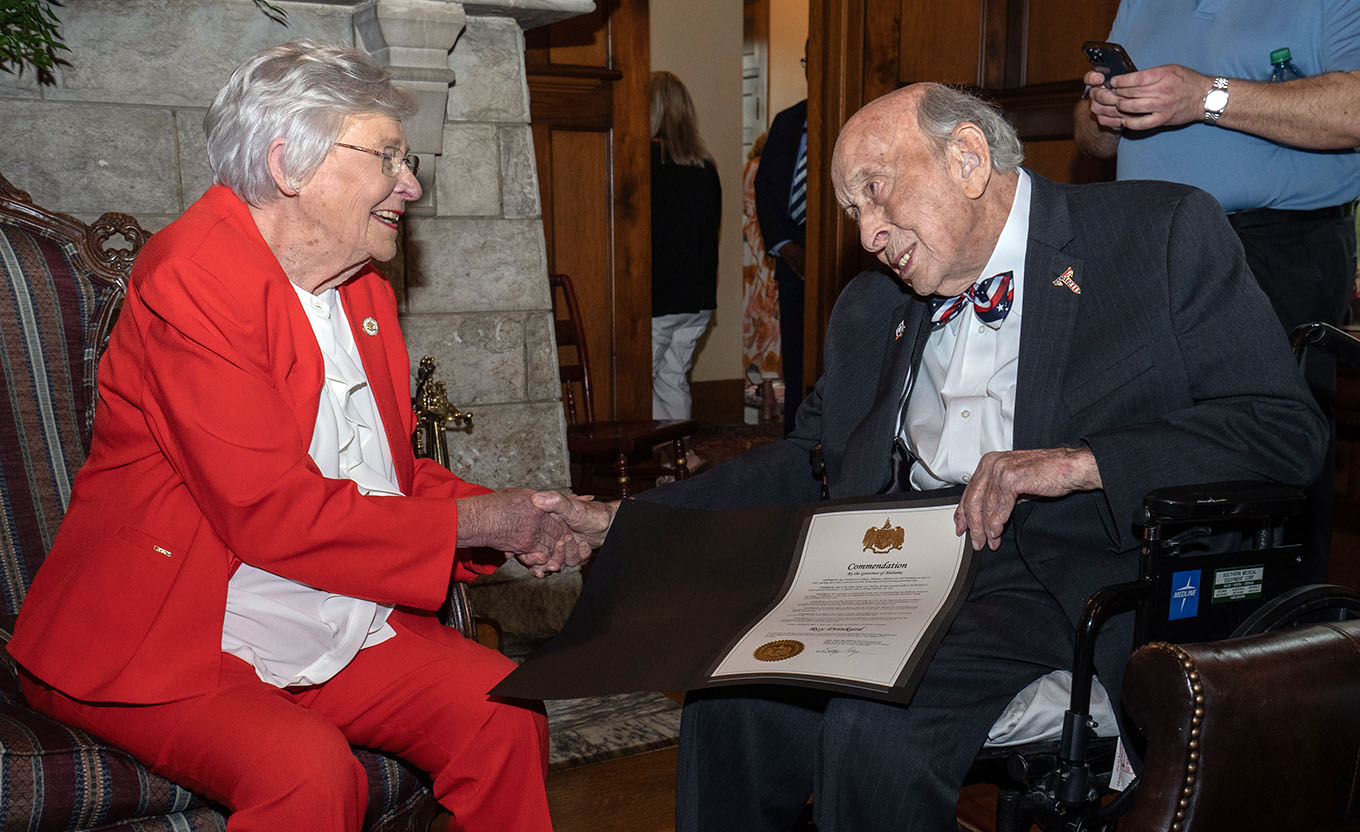Bug Tussles, Cry Baby Hollow and other tales
Published 8:00 am Monday, October 31, 2011
Born and raised near Cold Springs/ Bremen, Roy Sandlin, 90, has a wealth of knowledge and vivid memories.
Trending
He is one of the few people left who can identify some of the old pictures and landmarks, and was recently in the Cullman County Museum doing just that for assistant curator, Julie Burks, who had some pictures of Bug Tussle that no one had been able to tell her much about.
He pointed out the old boarding house, several dwellings, naming their owners, and identified the old Bugtussle store. “That’s out on Highway 69, which was called the Bremen Road back then,” he said. “Years later, the Bug Tussle Steakhouse was just next door.”
That steakhouse put Bugtussle on the map, along with the Andy Griffith show, which often referred to a town called “Bugtussle.” The steakhouse, in its heyday, drew crowds from long distances. There were pictures on the walls of Andy Griffith cast members taken with its owner.
Sandlin and his wife of 64 years, Virginia, were at the museum to help assemble an old-fashioned rope bed that belonged to Sandlin’s great-grandparents. “They used to stuff the mattresses with pine straw to help ward off bedbugs,” he pointed out.
“It was a pleasure listening to Mr. Sandlin talk about the rope bed that his great-grandfather made for his family in 1840,” said Burks. “As he assisted in tightening the ropes in the bed he educated me about the rope bed and the old saying that goes, ‘Good night, sleep tight, don’t let the bed bugs bite.’ The bed and the story are a perfect fit for the Civil War display in our primitive room. We are fortunate to have received such a donation.”
The bed had been in Sandlin’s father’s (Trave Sandlin) old barn for years, ever since his grandfather, (Littleton “Lit” Sandlin) died. It was originally made by Alfred Sandlin, his great-grandfather, who married in 1840, before Cullman was ever settled. “They moved into a two-room log cabin and set up housekeeping. They had to make all their own furniture back then,” Sandlin explained. “People used to push the trundle bed up under the bigger bed. The little children would sleep in it, and then it would be out of the way in the daytime.” The bed is made from old hand-hewn oak logs; a rope cradle was then laced between the boards for the stuffed mattress.
Trending
The Sandlin family played a big part in developing that section of the county — mainly by being very prolific. Alfred Sandlin donated the land for one of the first churches near Garrison’s Point. Sandlin’s grandfather, Lit Sandlin, was one of 11 children, and he had 11 children himself, among two wives. When the one-room, Cold Springs School burned to the ground in 1923, Lit donated the acreage and materials, and helped to build another school (completed in 1927). “He saw to it that there was a school, mainly because he had so many grandchildren and great-grandchildren of school age,” said Roy. “That school was near Addington Chapel Church. It went to the sixth grade. Before that school went up, there was a Mr. Strickland who used to drive a covered wagon as a bus for the local kids,” recalled Sandlin. “Afterward, we rode the bus to school or walked about two miles.” Later, Cold Springs High School was completed in 1937.
According to Sandlin’s book, “Father of the American Sandlands” the first Sandlin (by then the spelling had changed) moved into this area from King’s Creek, in Cherokee County, South Carolina, in 1832. They were Alfred Sandlin and his mother, four brothers and three sisters. His mother, Sarah Childers Sandlin, a widow, brought her children here as part of a covered- wagon train drawn by oxen. They settled in Bremen. Sarah (1784 – 1869) is buried in the Sandlin Cemetery near there.
One of his uncles, A.A. “Alec” Rollo, was twice elected sheriff. At the time the courthouse was where the Cullman Savings Bank is today. During Rollo’s first term, somewhere around 1915, he hanged the only man ever to be executed in Cullman County. “They built the gallows near the courthouse. The judge told my uncle that he could pick someone to pull the rope, but Rollo told the judge that it was part of his job and that he wouldn’t put that off on anyone else — so he pulled the rope that opened the trap door, and the man was hanged,” said Sandlin.
Roy and Virginia (Crane) Sandlin were high school sweethearts. They both graduated from Cold Springs High School — Roy in 1942, and Virginia in ’43. They have fond memories of high school, especially Roy, who recalls the highlight of his school years as being a trip to New Orleans in 1938. “Our vocational agriculture teacher, Mr. R.L. Yielding, loaded us up in the back of a coal truck and we rode all the way to New Orleans like that,” he laughed. Others on the trip included Boots Williams and a Marlin Strickland as chaperones, and classmates, Troy Hancock, Mancil Goodwin, Foot Strickland, Oliver Strickland, Gilbert Florence and Chester Freeman. Sadly, most of that group are now deceased, with the exception of Chester Freeman, who is most definitely alive and well.
“That was my first trip with Mr. Yielding, he was such an interesting individual,” said Freeman. “I had hardly been out of Cullman County at the time. Mr. Yielding knew the captain of a cruise ship, and he took us on a tour of it. I thought I was in hog heaven,” he laughed.
The group raised money for their trip by shucking sorghum, doctoring cattle, pruning fruit trees and selling barbecue. Freeman remembers that they were pretty blistered by the sun and wind when they rolled into the Crescent City. “We had never seen anything like New Orleans before,” said Sandlin, his eyebrows raised. “I remember paying about 15 cents for a Po’ Boy sandwich, “laughed Freeman. “I didn’t even know what a shrimp was.”
They toured the Roosevelt Hotel, which was in its heyday at the time. Freeman recalls walking around with his jaw dropped. “I couldn’t believe people lived like that,” he said. The boys slept on pallets in the back of the coal truck, or sometimes on the floor of a ‘filling station’ (gas station) during the entire trip, so the hotel — which was one of the grandest in the nation — must have been surreal to them.
Another memory of Cullman County that the men share is the legend of how Bugtussle got its name. “The town drunk, a fellow by the name of Charlie, was trying to make it home up the mountain road one night,” Sandlin began the tale. “Back then the only transportation was by horse and buggy or mule, so the road was littered with their droppings. Ol’ Charlie was slipping and sliding around, and noticed some bugs fighting over one pile. When he finally staggered into town he told people that the bugs were ‘tussling’ over that manure,” he chuckled. Previously, the little town was known as Wilburn, so named by Sandlin’s relative, Jesse Sandlin. “That was around 1912, and ever since then, they’ve called it Bugtussle.”
Back in the hills and hollows of Cullman County there are a lot of local legends like that. Another one is the tale of Cry Baby Hollow.
“My grandmother had a cousin by the name of Sally Childers,” Sandlin began the tale. “She never married. She drove her own horse and buggy, and handled it like a man. She lived out near Doss’s Creek and she attended every church function there was.”
Sandlin was about five at the time, and he remembers her as being a nice-looking, well-built woman. “One Christmas Eve she was returning from a church service at Brushy Pond. On the way back to Bremen, she had to cross Doss’s Creek. As she approached the bridge she heard a disturbance in the back of her buggy. When she turned around she saw a young child in the back of the wagon with his hand in her candy bucket.”
“She was startled, so she whipped her horse to the top of the creek, but when she looked back, both the candy bucket and the baby were gone.”
“Later on some men working for a timber company were getting ready to leave for the day,” said Sandlin. “They heard that baby crying and it scared them so bad that they ran off and left their tools. There have been a lot of stories about people hearing that baby crying around there.”
As a teenager Sandlin lived and worked on his family’s farm. Often he would tell his mother that he was going to leave here one of these days. When he graduated from high school, he did just that. In 1942, World War II began. He joined the Merchant Marines and literally saw the world. “About the only places I didn’t see were Tibet and Switzerland.”





